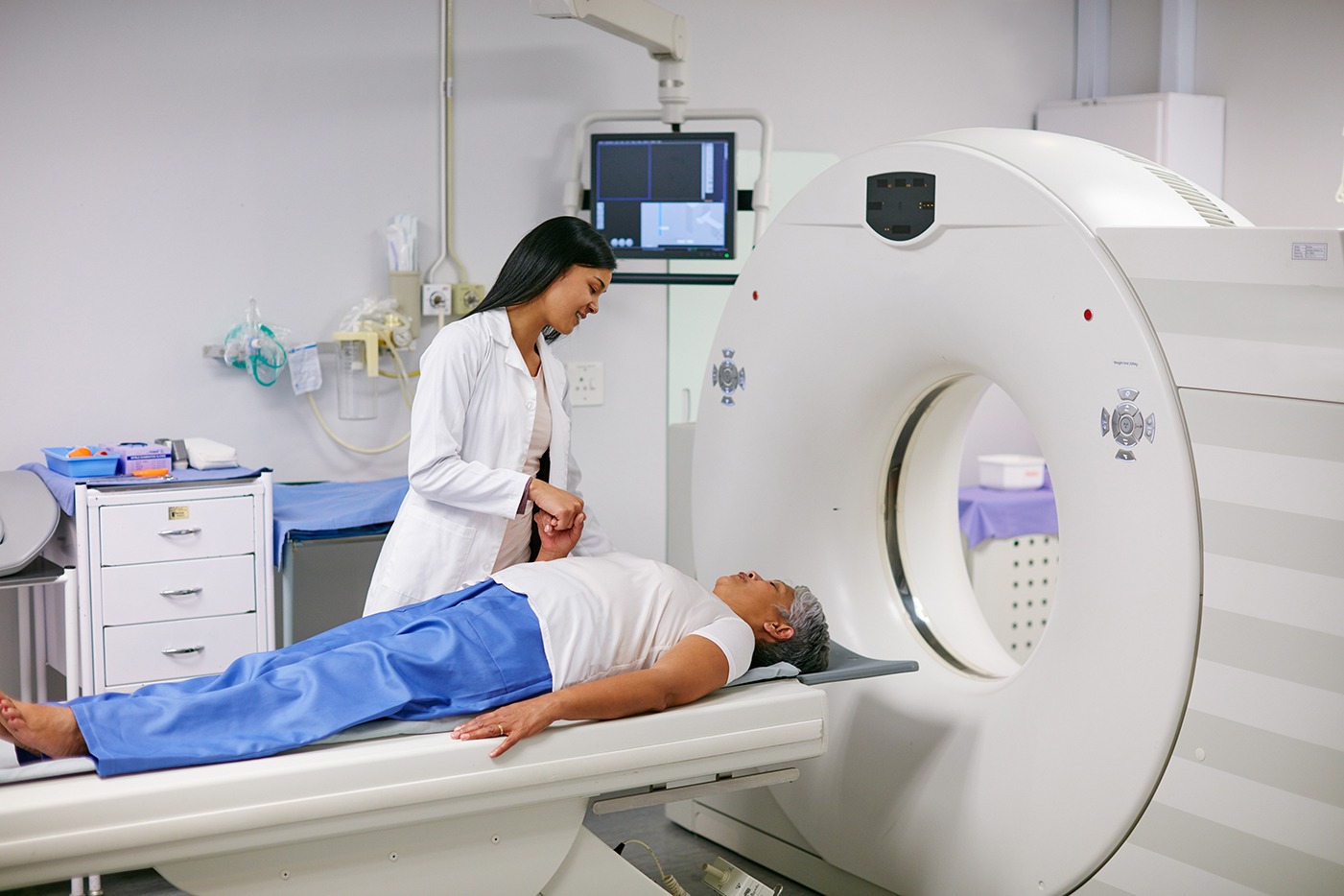How Is an MRI Head with Contrast Performed?
1] Preparation: Before the MRI Scan, the patient will be asked to remove all metal objects, including jewelry, glasses, and hearing aids, as metal can interfere with the magnetic field. A contrast agent will be administered intravenously (IV) into the patient’s arm.
2] Positioning: The patient will be asked to lie flat on their back on the MRI table, and a coil (specialized antenna) will be placed around the head to capture detailed images of the brain.
3] The Scan: Once the patient is positioned properly, the MRI machine will generate a magnetic field and use radio waves to create detailed cross-sectional images of the brain. The contrast agent will travel through the bloodstream and highlight areas of interest, improving image clarity.
4] During the Scan: The procedure typically takes between 30 and 60 minutes. The patient will be required to remain still during the scan to ensure that the images are clear. It is common for patients to hear loud tapping or knocking sounds from the MRI machine during the scan.
5] Post-Scan: After the MRI, the contrast agent will typically be metabolized and eliminated from the body through the kidneys. In most cases, patients can resume normal activities immediately after the procedure.
Benefits of MRI Head with Contrast
1] Enhanced Image Clarity: The primary benefit of using contrast in an MRI scan is the improved visibility of abnormal structures. This allows for more accurate diagnosis and better-informed treatment decisions.
2] Non-Invasive and Safe: MRI is a non-invasive imaging technique, meaning it does not require surgery or incisions. Unlike CT scans or X-rays, MRIs do not use ionizing radiation, making them safer for repeated use, especially in sensitive populations.
3] Accurate Diagnosis: With the added benefit of contrast, doctors can better identify brain tumors, lesions, blood vessel abnormalities, and other conditions that may be difficult to detect with a standard MRI.
4] Effective for Monitoring: MRI with contrast is not only useful for diagnosis but also for monitoring the progression of certain conditions, such as brain tumors or multiple sclerosis, helping doctors assess the effectiveness of treatment over time.









